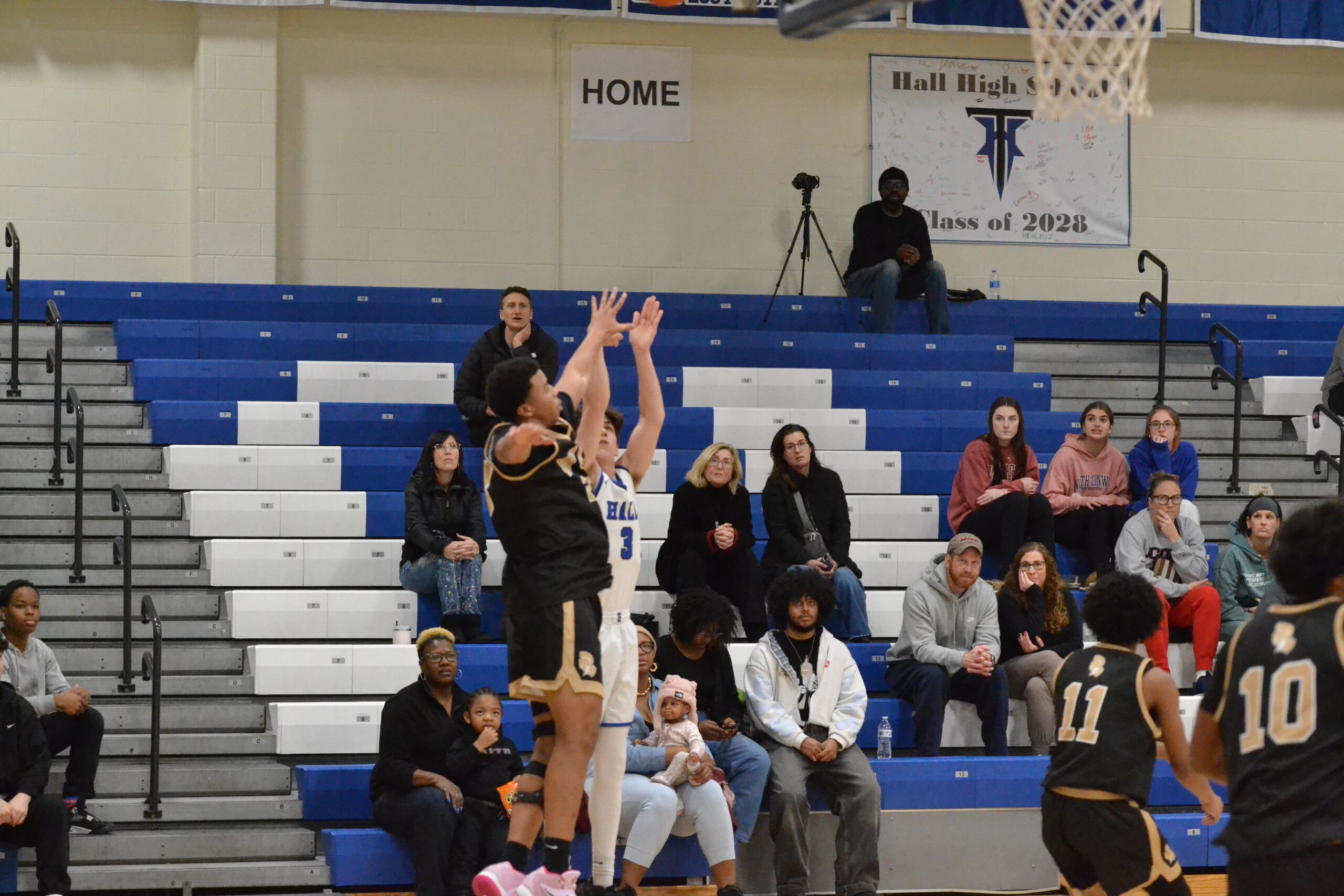Tourist In My Own State: The Noah Webster House and the Forgotten Founding Father

Audio By Carbonatix
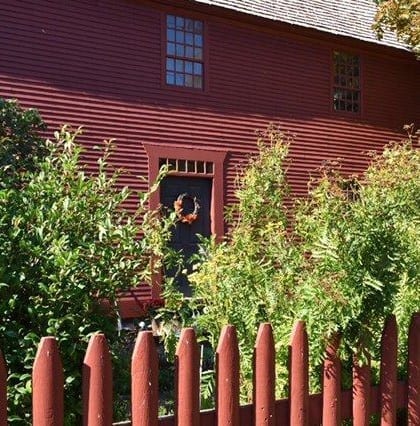
Noah Webster House. Photo credit: Deb Cohen
Deb Cohen of West Hartford pays a visit to the Noah Webster House.
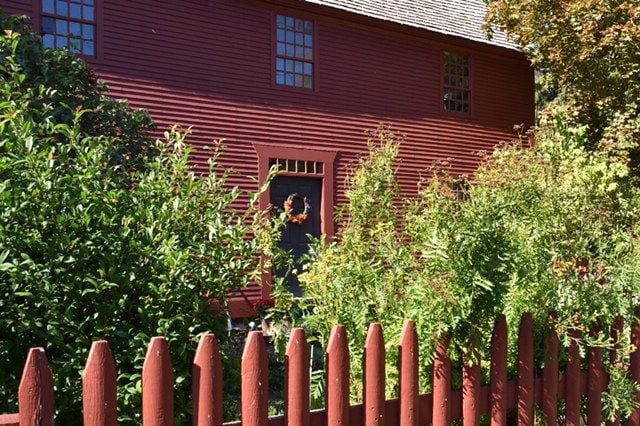
Noah Webster House. Photo credit: Deb Cohen
By Deb Cohen
Tourist in my own state? How about in my own TOWN?
When my children were young I had the pleasure (cough, cough) of accompanying them and their classmates on school field trips to the Noah Webster House & West Hartford Historical Society.
Unfortunately, during those visits my time was primarily spent counting heads to ensure no one had wandered away, so it was my pleasure to visit and chat (sans little ones!) with Executive Director Jenn Matos about Noah Webster, the museum and other activities of the West Hartford Historical Society.
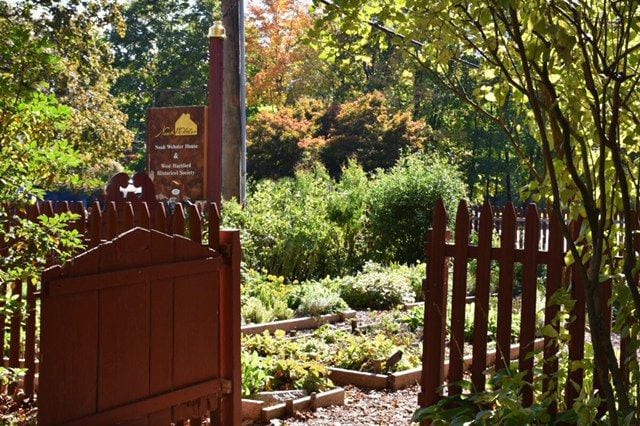
The traditional front garden of the Noah Webster House. Photo credit: Deb Cohen
The hour meeting flew and I quickly realized that at best I would be able to write a surface post about the treasure that we have here in West Hartford: the triple threat of the legacy of Noah Webster the man, the house itself which is a meticulously maintained example of period architecture and, last but not least, the resources available to the community at the West Hartford Historical Society.
Most know Noah Webster (I’ll call him Noah from now on) as THE Webster from the Merriam-Webster dictionary that you likely own or have owned at some point in your life. But Noah’s dictionary was the culmination of a lifetime of work that marks him as a major player in the development of our cultural history.
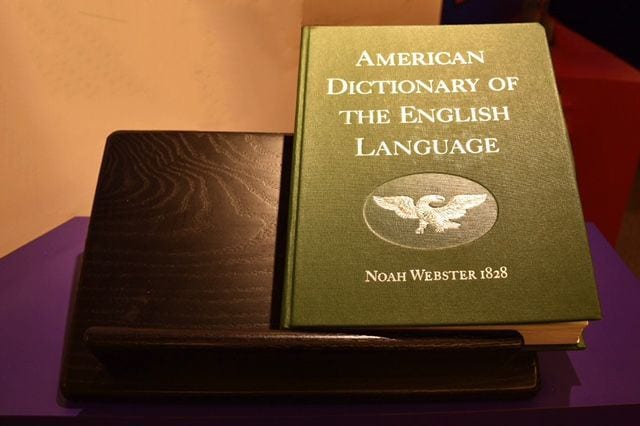
Noah’s dictionary, which he published at age 70, contains 70,000 words. Photo credit: Deb Cohen
Noah was born in 1758 in West Hartford on a 200 acre farm, the son of Noah Sr. and Mercy Webster. At the time West Hartford was primarily a rural community (so hard for those of us that live here now to imagine as there are no operational farms today).
He grew up doing chores and going to school along with his siblings, but recognizing his intellect and thirst for knowledge the local minister (typically the most educated man in the community) began working with him at age 14 to prepare him for college.
He entered Yale in 1774 at age 16 and at the start of the Revolutionary War. Upon graduation he wanted to go to law school but couldn’t afford it and so he became a teacher.
Thus began his desire to reform education and to influence the pronunciation and spelling of American English.
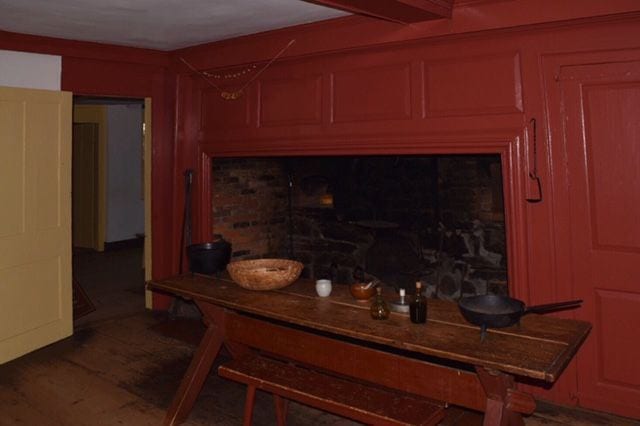
The kitchen of the Noah Webster House. Perhaps young Noah and his siblings studied at a similar table? Photo credit: Deb Cohen
Noah’s “Blue-Backed Speller” was introduced in 1783 as THE textbook to be utilized by all school children across the fledgling nation in the post-Revolutionary War era. Noah felt that since we had fought so hard for our freedom from English rule that we should not continue to use English textbooks in the classroom.
In addition to helping children learn to read, his goal with the Speller was to establish a common pronunciation and spelling of words across America. We can thank him for the fact that we write “public” instead of “publick” and “center” instead of “centre” as just two minor examples.
Noah also wanted to encourage pride in our new nation, and patriotic themes were woven throughout the Speller. The book was used in classrooms across America until the end of the 19th century.
As a result America is one of the most homogenous countries in the world in terms of spelling and pronunciation.
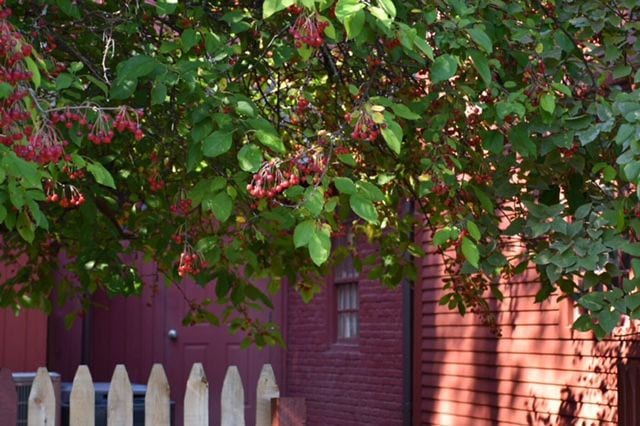
Beautiful berries perfectly complementing the home’s exterior. Photo credit: Deb Cohen
Noah had a strong and opinionated personality, but he was a loving family man and well-respected member of the community. He ultimately obtained his law degree, and tirelessly worked to promote the creation of copyright laws to protect authors such as himself.
He was also a legislator in Connecticut’s Old State House, founded Amherst College in Amherst, Massachusetts and was an active abolitionist.
Finally, his crowning achievement, the American Dictionary of the English Language, was published in 1828. It was the result of 25 years of research and documentation and immediately became the authoritative guide to the American vocabulary. It included 70,000 words, many of which were uniquely American.
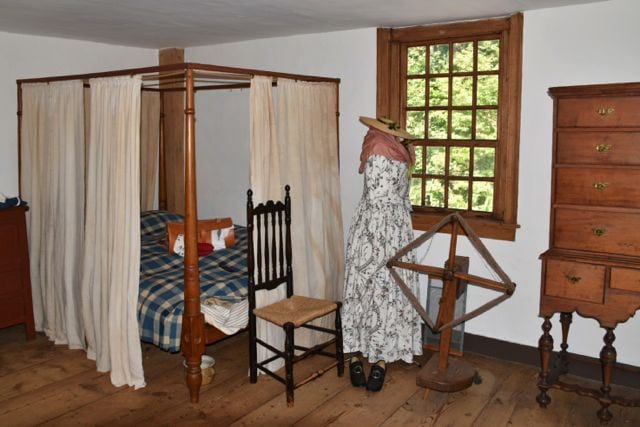
A recreation of what a bedroom might have looked like in 1774, the Revolutionary period. Photo credit: Deb Cohen
The Noah Webster House itself was a private residence for most of its existence. While the house is currently dated as being constructed in 1748-1749, some exciting evidence has been discovered which would date the home even earlier…architectural historians are continuing to research and validate.
While Noah was born in the home, he did not live out his days there. The home transferred to various families over the years and its final residents were the Hamiltons. The Hamiltons built a new home behind the Noah Webster House in the 1960’s, leaving the older structure empty.
Luckily for the house and for all of us, Gordon Bennett, a West Hartford resident, encouraged the Hamiltons to donate the home to the town. Gordon then proceeded to encourage its renovation and it was opened as a museum in 1965. The rest, as they say, is history.
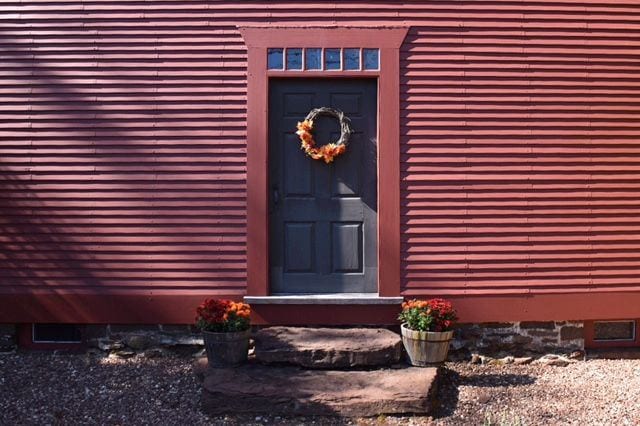
The simple but charming front door of the Noah Webster House is dressed for fall. Photo credit: Deb Cohen
In speaking with Executive Director Jenn Matos, she explained that the history of Noah Webster and the history of West Hartford are intertwined. Noah was a product of the environment where he grew up, and had he grown up elsewhere his life might have taken a different direction.
In that sense, it’s more than appropriate that the Noah Webster House and the West Hartford Historical Society are intertwined as well. The Historical Society serves as a resource to the community not just on Noah Webster history but on our overall community history.
The mission of the Historical Society is to not only preserve and share history but to create greater cultural understanding and promote literacy, all goals that Noah strived for in his long and illustrious life.
In addition to providing valuable resources to the community via the activities of the Historical Society, Jenn’s personal mission is help Noah Webster get the recognition as a founding father that she thinks he deserves.
She’s not alone in her beliefs. Much has been written on the subject, including a book by Joshua Kendall entitled “The Forgotten Founding Father: Noah Webster’s Obsession and the Creation of an American Culture”.
What do you think? Is he worthy to be included in such company as Benjamin Franklin, Thomas Jefferson and George Washington? I have to say I’m convinced. Please see for yourself when you pay a visit to the Noah Webster House & West Hartford Historical Society.
Did you enjoy this post? If so, please see similar posts about the Connecticut Old State House and the Coltsville National Historic Park.
Deb Cohen of West Hartford started The Front Door Project in the summer of 2014 as a way to motivate herself to get outside, exercise and pay more attention to her surroundings. She began photographing homes with a primary focus on the front door, which is a welcoming focal point. Social media provided the means to share the photographs and a ready audience to follow along, and her new-found interest soon led to exploring other local area towns in my free time. The “project” has led to deeper interests in architecture, local history and historic preservation and came at a time in Deb’s life when she needed some inspiration. Please join Deb as she continues to share her everyday travels and explorations of other towns and places! You can find her other posts at www.thefrontdoorproject.com.


